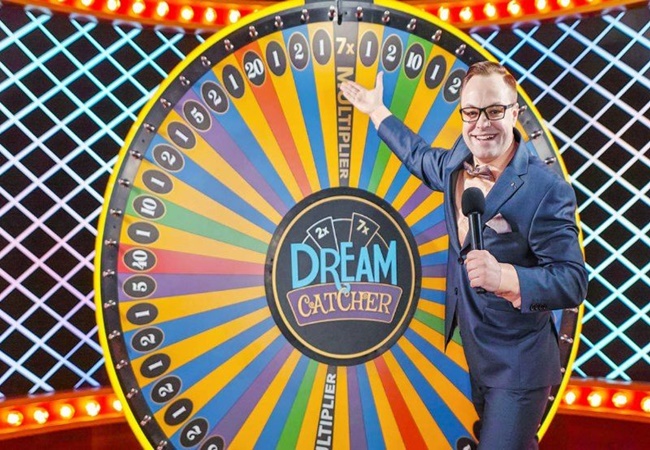
Teen Patti, a popular card game in South Asia, has long captivated players with its blend of strategy, luck, and social interaction. Originating from the Indian subcontinent, this game shares similarities with poker and is traditionally played in a more relaxed and familial setting. Over time, Teen Patti game has evolved, introducing various innovative twists and variations to keep the game engaging and exciting. One such intriguing variation is the “Dream Catcher” game, which adds a new layer of strategy and unpredictability to the classic Teen Patti experience.
Understanding Teen Patti
Before delving into the specifics of the Dream Catcher variation, it’s essential to understand the basics of Teen Patti. The game is typically played with a standard 52-card deck and can involve three to six players. Each player is dealt three cards face down, and the objective is to have the best three-card hand according to traditional hand rankings. These rankings include high cards, pairs, flushes, and so on, with the highest being the trio (three of a kind).
Players place their bets into a central pot, and the betting continues in a clockwise direction. Unlike poker, Teen Patti doesn’t involve community cards or a dealer’s hand; each player relies solely on their three cards. The game proceeds through several betting rounds until only one player remains, or all but one player folds. The remaining player wins the pot.
Introduction to Dream Catcher
The Dream Catcher variation introduces a unique element to Teen Patti, combining the traditional gameplay with a special set of rules and bonuses. This variation is named after the Native American dream catcher, symbolizing luck and protection. In the context of Teen Patti, the Dream Catcher game adds an element of fortune and strategic twists that can change the game’s outcome.
How Dream Catcher Works
The Dream Catcher game follows the standard rules of Teen Patti but with an added twist. Alongside the regular deck, there is a separate “Dream Catcher” deck or card that players aim to capture during the game. This card or deck contains special symbols or bonuses that can influence the gameplay significantly.
Setting Up the Game
- Dream Catcher Card/Deck: Before the game begins, a Dream Catcher card or deck is introduced. This card/deck contains special symbols such as wild cards, bonus points, or specific instructions that can benefit the player who captures it.
- Initial Deal: Players are dealt their three cards as usual. The Dream Catcher card/deck is placed in the center of the table, accessible to all players.
- Betting Rounds: The game proceeds with the usual betting rounds, but players also have the option to attempt to capture the Dream Catcher card/deck during their turn. Capturing the Dream Catcher card requires an additional bet or specific action, as defined by the variation’s rules.
Capturing the Dream Catcher
Capturing the Dream Catcher card is the central element of this variation. The methods and conditions for capturing it can vary, adding to the game’s strategic complexity.
- Additional Bet: Players may be required to place an additional bet to attempt capturing the Dream Catcher card. This bet is separate from the regular pot and goes into a special side pot.
- Specific Hand Requirement: In some variations, players need to have a specific hand, such as a pair or a sequence, to be eligible to capture the Dream Catcher card.
- Action-Based Capture: Players might need to perform specific actions, like revealing one of their cards or matching a certain card in their hand with the Dream Catcher card’s symbol, to capture it.
Benefits of the Dream Catcher
Capturing the Dream Catcher card offers various benefits, making it a highly sought-after element in the game.
- Wild Card: The Dream Catcher card can act as a wild card, allowing the capturing player to substitute it for any card in their hand to form a better combination.
- Bonus Points: Some Dream Catcher cards offer bonus points that are added to the player’s total, enhancing their chances of winning the game.
- Special Powers: Certain Dream Catcher cards grant special powers, such as the ability to peek at another player’s card, switch a card with another player, or even force an opponent to fold.
Strategic Implications
The introduction of the Dream Catcher card adds a new layer of strategy to Teen Patti. Players must decide whether to focus on capturing the Dream Catcher or to play their hand traditionally. The additional betting and actions required to capture the Dream Catcher card can significantly influence the game’s dynamics, encouraging players to adopt more varied and innovative strategies.
- Risk vs. Reward: Players need to weigh the risk of placing additional bets or performing specific actions against the potential rewards of capturing the Dream Catcher card.
- Bluffing and Deception: The Dream Catcher card adds more opportunities for bluffing and deception. Players can pretend to aim for the Dream Catcher to mislead their opponents and influence their betting patterns.
- Hand Management: Managing one’s hand becomes more critical, as players must consider how the Dream Catcher card can complement their existing cards.
Conclusion
The Dream Catcher variation of Teen Patti injects fresh excitement and complexity into the traditional game. By introducing a special card or deck with unique benefits and strategic implications, this variation challenges players to think beyond the usual gameplay mechanics. The blend of luck, strategy, and social interaction that defines Teen Patti is enriched by the Dream Catcher element, making it a thrilling experience for seasoned players and newcomers alike.
Whether played casually among friends or in a competitive setting, the Dream Catcher game in Teen Patti offers a dynamic and engaging twist that keeps the spirit of the game alive while adding new layers of fun and intrigue.
